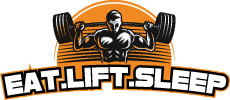If you’re new to the world of fitness, you may have heard people talk about ‘cutting’ as a way to achieve a leaner, more sculpted physique.
But what exactly does cutting mean? Put simply, cutting refers to a process of reducing body fat while retaining muscle mass.
Cutting is often used by athletes and bodybuilders in preparation for competitions or events where they need to showcase their muscular definition. However, it can also be an effective method for anyone looking to shed excess fat and improve their overall health and appearance.
In this article, we’ll delve deeper into what cutting entails and explore some strategies for achieving your cutting goals safely and effectively.
Understanding Body Composition
You’ve been hitting the gym consistently, watching what you eat, and feeling great about your progress. But have you ever wondered what your body composition really is?
Understanding your body fat percentages and muscle mass distribution can give you a better idea of where you stand in terms of overall health and fitness. Body fat percentages refer to the amount of fat in your body compared to other components like muscle, bone, and organs. The average range for men is around 13-17%, while women typically fall between 20-25%. However, these ranges can vary based on factors such as age, genetics, and lifestyle habits.
Knowing your body fat percentage can help you set realistic goals for weight loss or muscle gain. Muscle mass distribution refers to how much muscle you have in different areas of your body. For example, someone with a higher proportion of muscle in their legs may be better at running or jumping compared to someone with more upper body muscle. Understanding this aspect of your body composition can help you tailor your workouts and focus on specific areas for improvement.
By understanding your body composition through measurements such as skinfold calipers or bioelectrical impedance analysis (BIA), you can get a clearer picture of where you stand in terms of overall health and fitness. With this knowledge, you can make informed decisions about how to reach your goals and optimize your physical performance without solely relying on the number on the scale.
Setting Realistic Cutting Goals
Understanding body composition is crucial in achieving fitness goals. However, when it comes to losing weight, cutting becomes an essential aspect of the process. Cutting refers to the process of reducing body fat by creating a calorie deficit.
To set realistic cutting goals, it’s important to understand that cutting too much can be harmful to your body. The goal should be gradual and sustainable weight loss. Setting unrealistic goals can cause frustration and lead to giving up on the process altogether.
Tracking progress regularly is vital during this phase to ensure you’re on track. Adjusting strategies as you progress is also crucial in achieving your cutting goals. You may hit a plateau where changes in diet and exercise are not yielding results anymore. In such cases, it’s crucial to adjust your approach by modifying your diet or increasing physical activity levels.
Consistency is key when it comes to cutting. Consistent adherence to a healthy lifestyle will help achieve long-term success. Incorporating strength training into your routine can help preserve muscle mass while reducing body fat. Adequate rest and recovery are just as crucial as diet and exercise in achieving cutting goals.
Remember, cutting should be done gradually, with realistic goals and consistent effort. Tracking progress and adjusting strategies along the way will help keep you on track towards achieving your desired results.
Calculating Your Daily Caloric Needs
First, let’s talk about Basal Metabolic Rate. This is the amount of energy your body needs to stay alive and is calculated based on your age, gender, and body composition.
Next, we’ll look at Activity Level. This is the amount of energy your body needs to function during physical activity and is based on the type, duration, and intensity of the activity.
Lastly, we’ll discuss Body Weight. This is the amount of energy your body needs to sustain your current weight, and is determined by how much energy you consume and how much energy you burn.
Understanding these three components will help you figure out your daily caloric needs.
Basal Metabolic Rate
Are you looking to cut down on body fat and increase muscle mass?
One important factor to consider is your basal metabolic rate (BMR), which refers to the number of calories your body burns at rest. Factors affecting BMR include age, gender, weight, height, and muscle mass.
As we age, our BMR naturally slows down, while men typically have a higher BMR than women due to having more muscle mass. However, there are strategies for increasing your BMR through exercise and nutrition.
One effective strategy for increasing BMR is strength training. Building muscle not only increases your overall calorie expenditure during exercise but also raises your BMR as muscles require more energy to maintain than fat.
Incorporating compound exercises like deadlifts, squats, and bench press into your workout routine can help build muscle and boost your metabolism. Additionally, consuming protein-rich foods such as chicken breast or Greek yogurt can aid in muscle repair and growth.
Another factor that affects BMR is dieting. Extreme calorie restriction can actually lower your BMR as the body goes into ‘starvation mode’ and conserves energy by slowing down metabolism. This is why crash diets are often unsuccessful in the long term.
Instead, focus on consuming enough calories to support your daily activities while still creating a caloric deficit for weight loss goals. Eating small meals throughout the day and incorporating high-intensity interval training (HIIT) can also help increase metabolism for optimal fat loss.
In conclusion, understanding the role of basal metabolic rate in weight loss goals is crucial for success in cutting fitness programs. Factors affecting BMR cannot be changed but implementing strategies such as strength training and proper nutrition can effectively increase metabolism for optimal results.
Avoid extreme dieting methods that may hinder progress and focus on sustainable lifestyle changes that support a healthy metabolism over time.
Activity Level
Now that we have discussed the role of BMR in weight loss, let’s move on to another important factor in calculating your daily caloric needs: activity level.
Your activity level refers to how much physical activity you engage in throughout the day, including exercise and non-exercise activities like walking or cleaning.
It is important to find a work-life balance that allows for regular physical activity without sacrificing rest and recovery.
Engaging in moderate-intensity exercise for at least 150 minutes per week can help improve overall health and contribute to weight loss goals.
Your activity level also affects how many calories you burn throughout the day.
For example, a sedentary office job may require fewer calories than an active job like construction work or manual labor.
It is important to take into account all aspects of your daily routine when calculating your caloric needs.
In addition to formal exercise, non-exercise activities such as standing and fidgeting can also contribute to increased calorie expenditure.
Finding ways to incorporate more movement throughout the day, such as taking breaks from sitting or walking during phone calls, can help boost your daily calorie burn and support a healthy metabolism.
Body Weight
Now that we have discussed the role of BMR and activity level in calculating your daily caloric needs, let’s move on to another important factor: body weight. Your body weight plays a significant role in determining how many calories you need to consume each day. Generally speaking, the more you weigh, the more calories you will burn during physical activity, which means you’ll need to consume more calories to maintain your weight.
When it comes to weight loss goals, tracking progress is crucial. One of the common mistakes people make is relying solely on the scale as a measure of progress. However, changes in body composition can be just as important as changes in overall weight.
For example, if you are losing fat but gaining muscle, your weight may stay the same or even increase slightly despite progress towards your goals.
It is also important to remember that extreme calorie restriction is not sustainable or healthy for long-term success. While creating a calorie deficit is necessary for weight loss, cutting calories too drastically can lead to metabolic slowdown and other negative health consequences.
It’s essential to find a balance that allows for gradual and sustainable progress towards your goals while still meeting your body’s nutritional needs.
Creating A Balanced Cutting Diet
Meal planning is a crucial aspect of cutting in fitness. It involves creating a diet plan that helps you maintain a caloric deficit while still providing your body with the necessary nutrients. A balanced cutting diet should include a variety of whole foods, such as lean protein sources, complex carbohydrates, and healthy fats.
Macronutrient tracking is also an essential component of cutting. By monitoring your intake of macronutrients, which are protein, carbohydrates, and fats, you can ensure that you are consuming the right amount of each to support your fitness goals. This requires calculating your daily caloric needs and dividing them into the appropriate macronutrient ratios.
To simplify the process of meal planning and macronutrient tracking, many people use apps or online tools. These tools make it easy to track your meals and make adjustments as needed to meet your goals. Additionally, they can help you plan meals in advance and create shopping lists to ensure that you have all the necessary ingredients on hand.
| Meal | Protein | Carbohydrates | Fats | Calories |
|---|---|---|---|---|
| Breakfast | 2 eggs (12g) | 1 slice whole wheat toast (12g) | 1 tbsp peanut butter (8g) | 300 |
| Snack 1 | Greek yogurt (15g) | Apple slices (15g) | Almonds (6g) | 200 |
| Lunch | Grilled chicken breast (25g) | Quinoa (20g) \substitute for rice or pasta\ | Avocado (10g) | 400 |
| Snack 2 | Tuna salad with crackers(15g) | Carrot sticks(5g) | Hummus(8g) | 300 |
| Dinner | Baked salmon(30 g) | Steamed vegetables(10 g) | Brown rice(20 g) | 500 |
In summary, cutting in fitness involves creating a balanced diet plan that involves meal planning and macronutrient tracking. By using apps or online tools, you can simplify the process and ensure that you are meeting your goals. With dedication and consistency, a cutting diet can help you achieve your desired physique and improve your overall health.
Incorporating Cardiovascular Exercise
Cardiovascular exercise, also known as ‘cardio,’ is a vital component of any fitness routine. It involves increasing your heart rate and breathing rate to improve the health of your heart and lungs. Incorporating cardio into your workout regimen can help you burn calories, reduce stress levels, and improve overall endurance.
One highly effective form of cardio is High-Intensity Interval Training (HIIT) workouts. These workouts involve short bursts of intense activity followed by brief periods of rest or low-intensity exercise. HIIT workouts can be done in a variety of ways, such as sprints on a treadmill or bike, jumping jacks, or burpees. They are great for burning fat and improving cardiovascular health in less time than traditional steady-state cardio.
Another way to incorporate cardio into your fitness routine is by exploring outdoor running routes in your area. Running outdoors not only provides an opportunity to get some fresh air and enjoy nature but it also challenges your body in different ways than running on a treadmill. Find scenic routes with hills or inclines to challenge yourself and increase the intensity of your workout.
Try incorporating at least one HIIT workout into your weekly routine.
Mix up your cardio routine by trying new outdoor running routes.
Gradually increase the intensity and duration of your cardiovascular exercise for continued progress and improvement.
By incorporating both HIIT workouts and outdoor running routes into your fitness routine, you can keep things interesting while challenging yourself physically. Remember to listen to your body and gradually increase the intensity and duration of your cardio exercises over time for continued progress towards improved cardiovascular health.
Implementing Weight Training
After incorporating cardiovascular exercise into your fitness routine, the next step is to implement weight training. Weight training, also known as strength training, involves using resistance to build and tone muscles. This type of exercise is essential for increasing overall strength and improving body composition.
One aspect of weight training that can be intimidating for beginners is cutting. Cutting refers to reducing body fat while maintaining muscle mass. This process requires a combination of proper nutrition and consistent exercise. It’s important to note that cutting should only be done in a healthy and sustainable manner.
To ensure safe and effective weight training, progress tracking and proper form are crucial. Keeping track of your progress can help you set achievable goals and stay motivated. Proper form is essential for preventing injuries and ensuring you’re targeting the intended muscle group. It’s helpful to work with a qualified trainer or watch instructional videos to learn proper techniques for each exercise.
| Exercise | Targeted Muscles | Sets | Reps |
|---|---|---|---|
| Squats | Glutes, quadriceps, hamstrings | 3-4 | 8-12 |
| Bench press | Chest, triceps, shoulders | 3-4 | 8-12 |
| Deadlifts | Back, glutes, hamstrings, quads | 3-4 | 6-10 |
| Bicep curls | Biceps | 3-4 | 10-15 |
Incorporating weight training into your fitness routine can have many benefits beyond just building muscle. It can improve bone density, increase metabolism, and enhance overall physical performance. By implementing proper form and keeping track of progress, you can safely achieve your fitness goals while avoiding injury. So grab some weights and start lifting!
Monitoring Your Progress
As you embark on your fitness journey, it’s important to keep track of your progress. Monitoring your progress will help you stay motivated and adjust your routine as needed.
One way to do this is by tracking macros, which involves keeping track of the macronutrients (protein, carbohydrates, and fat) in your diet. This can help you ensure that you’re getting enough of each nutrient to support your fitness goals.
Measuring body fat percentage is another important way to monitor your progress. While weight can be a helpful metric, it doesn’t always tell the full story. Body fat percentage takes into account the amount of lean muscle mass you have versus how much body fat you’re carrying. By measuring this regularly, you can track changes in body composition and make adjustments to your diet and exercise routine accordingly.
It’s also important to remember that progress isn’t always linear. You may experience plateaus or setbacks along the way, but that doesn’t mean you’re not making progress overall. Keep an open mind and be willing to adjust your approach as needed.
With consistent effort and monitoring, you’ll be able to reach your fitness goals and feel great about all that you’ve accomplished.
Maintaining Your Results
Once you have achieved your fitness goals and made progress, it is important to maintain your results. This can be challenging, but with the right mindset and habits, it is possible to sustain your achievements.
One important aspect of maintaining your results is tracking progress. By monitoring your progress regularly, you can identify any areas that need improvement and make adjustments accordingly.
Another key factor in maintaining your fitness results is staying motivated. It can be easy to lose motivation once you have achieved your goals, but it is important to continue setting new targets for yourself. This could involve trying a new workout routine or signing up for a fitness event such as a 5k or half marathon. By having something to work towards, you will stay motivated and focused on maintaining your results.
Additionally, incorporating healthy habits into your daily routine can help you maintain your fitness achievements. This could include eating a balanced diet, getting enough sleep each night, and staying hydrated throughout the day. By making these habits a part of your lifestyle, you will be more likely to sustain the progress you have made.
Remember that maintaining your fitness results is an ongoing process that requires commitment and effort. By tracking progress regularly, staying motivated, and incorporating healthy habits into your daily routine, you can enjoy sustained success in achieving your fitness goals without feeling burned out or overwhelmed by the process.
Conclusion
In conclusion, cutting in fitness is a process that requires dedication and consistency. By understanding body composition, setting realistic goals, calculating your daily caloric needs, creating a balanced diet, incorporating cardiovascular exercise and weight training, monitoring your progress and maintaining your results, you can achieve the physique you desire.
Did you know that a study published in the Journal of Strength and Conditioning Research found that individuals who combined weight training with cardio during their cutting phase lost more body fat than those who only did cardio?
This highlights the importance of incorporating both forms of exercise into your routine for optimal results. Remember to stay focused on your goals and keep pushing yourself towards success. With hard work and determination, you can achieve the body of your dreams.




